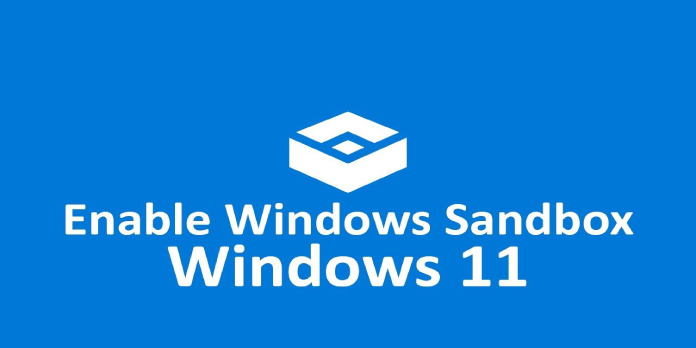Here we can see, “How to Enable Windows Sandbox in Windows 11”
- Windows Sandbox is a safe environment that isolates running applications from the main system, and turning it on in Windows 11 is really straightforward.
- Command Prompt can undoubtedly assist you in doing this activity swiftly.
- Another excellent choice you should try is running a specific PowerShell command.
This post will undoubtedly provide you with some straightforward solutions if you’re wondering how to enable Windows Sandbox on Windows 11.
Before anything else, you should be aware that it was initially made available on Windows 10 by Microsoft, who also included it in the most recent OS.
It’s important to note that Windows Sandbox can assist you in running untrusted apps in a portable, isolated environment. But let’s look at how it functions in practice.
How does a Sandbox environment work?
As you can see in the image below, Windows Sandbox is operating entirely independently of your primary installation.
It is technically a virtual machine created on-demand by employing Microsoft’s hypervisor and running the identical operating system screen as the one on your first machine.
It may be used to install and run untrusted classic software in a separate mode from the main installation and is about 100MB in size.
As an added bonus, Microsoft Windows Sandbox is quite effective since it uses a built-in kernel scheduler, smart memory management, and virtual graphics.
Additionally, every piece of Sandbox data is destroyed when the app is closed. Why does that matter? You will begin each time you use the Windows Sandbox function with a fresh installation of Windows 11.
Additionally, you should be aware that Windows Sandbox is available in the Pro and Enterprise editions of Windows 11 but not the Home edition.
You must first press the Windows key, then type Sandbox and choose it to execute apps in Sandbox.
Following that, copy the application you wish to execute on the host computer, open the Windows Sandbox window, and paste the file.
The best solution for you will be revealed when you read this article in its entirety to enable Windows Sandbox in Windows 11.
How can I quickly enable Windows Sandbox in Windows 11?
1. Use the Windows optional features
-
- Press Windows and R together.
- Type optional features into the Run dialog box, then click OK.
- Click OK after selecting the Windows Sandbox checkbox.
- Switch off your computer.
2. Try PowerShell
-
- Type Power Shell into the Search box, then click Run as administrator.
- Enter the following command into the pop-up box after you type it:
Enable-WindowsOptionalFeature -Online -FeatureName "Containers-DisposableClientVM" -All
- Reboot your computer.
3. Use Command Prompt
-
- Then type Command Prompt and choose Run as administrator by pressing the Windows key.
- Enter after typing the following command:
dism /online /Enable-Feature /FeatureName:"Containers-DisposableClientVM" -All
- Reboot your computer.
Will using a Sandbox environment affect my device?
Any software you install in your Windows Sandbox will only run in this environment, as was previously indicated. As a result, your host service is unaffected.
Additionally, all of the software and associated data are completely erased whenever you close your Windows Sandbox.
A Sandbox environment may be the ideal way to completely safeguard your PC and software components if you frequently install apps and programs from dubious sources.
Furthermore, remember that sandboxing can be a powerful tool for identifying malware attacks and stopping them before they reach a network.
Conclusion
I hope you found this guide useful. If you’ve got any questions or comments, don’t hesitate to use the shape below.
User Questions
1. How can I make Sandbox available in Windows 11?
To launch the Windows Optional Features tool, type Turn Windows Features on or off into the task bar’s search field. If prompted, restart the computer. After choosing Windows Sandbox, click OK.
2. How is a window sandbox activated?
If you click the Search button and type optional features into the search bar, you can also access the Windows Features panel. Scroll down the list in this window until you find the Windows Sandbox checkbox. Click OK after selecting the box. After installing Sandbox, a restart request appears.
3. I don’t have Windows Sandbox; why?
To access Windows Sandbox, you must upgrade to Windows 10 Pro. To get it, you’ll need to upgrade to Pro. For purchase, click the $99 button (the price might vary by region or depending on the edition you are upgrading from or upgrading to).
4. How can I enable Windows Sandbox in Windows 11? – Reddit
How can I enable Windows Sandbox in Windows 11? from techsupport
5. Windows 11 sandbox on Windows 10 : r/sysadmin – Reddit



